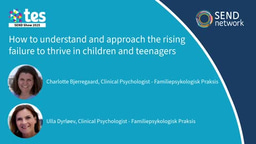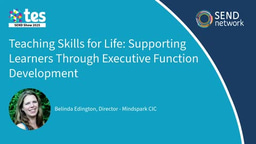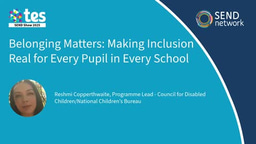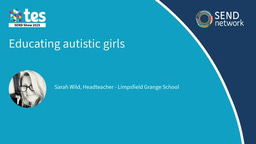Delivering high quality early years provision on a budget: Resources and activities

Introduction
As early years practitioners you have a statutory responsibility to provide children with opportunities to engage in meaningful play activities which promote their learning and development. Play activities should be age and developmentally appropriate, motivating and stimulating for each child, and should additionally support each area of learning and development within the Early Years Foundation Stage Framework (EYFS). Some early years resources can be costly; however, the cost of resources does not always relate to the quality of them. Resources/activities are ultimately tools: it is how you as a practitioner implement and deliver learning opportunities within your own practice that can enhance the quality of them. Therefore, you can deliver high quality provision with low-cost resources.
The second part of this four-part series provides you with some suggestions of activities and resources that you can readily implement within your own setting on the smallest of budgets.
Continuous professional development (CPD)
As a practitioner you are the most valuable resource and investing in your own CPD should be a priority. Some local authorities may provide free training for early years practitioners. For some courses and training opportunities, there may be associated costs. Managers could send one or two practitioners on a course or enable them to attend a training event and then encourage them to feedback what they have learnt to the rest of the practitioners during a staff meeting. Your setting could also establish links with other settings within your area, and you may be able to get a trainer to deliver training across multiple settings at one venue and then share the cost across the settings. If you are experiencing financial constraints surrounding CPD, ensure that you focus on all EYFS mandatory training, such as safeguarding and paediatric first aid.
You can also find early years training content right here on the SEND Network. Get in touch with the team to learn more.
Resources and activities
Resources and activities do not need to be expensive, and a bit of imagination and creativity can go a long way. Start by thinking about each area of learning and development and plan activities and the resources you need in advance to give you time to collect materials. Here are a few suggestions that may help prompt you to think ‘outside’ the box:
- Continuous provision - refers to the learning resources and activities that are readily available to children daily and often throughout the year. Resources such as mark making tools, sand and water play are often considered as staple continuous provision. Continuous provision supports many areas of children’s development as it can promote exploration, investigation and independence (in terms of being able to freely access the resources without needing to ask a practitioner to retrieve them). You can enhance your continuous provision by sourcing natural materials such as collecting leaves, pinecones and flowers from your outdoor area and adding them to your water and sand play.
- Loose part play - involves providing children with open ended materials which they can choose how to use. Often loose parts are natural resources and everyday items which can be sourced very cheaply (and in many cases for free). The theory behind loose part play is that it should be non-prescriptive. You provide the children with a range of resources, but you should not tell them how they should be played with (you can extend their learning by making suggestions as they play, but it should be a child-led activity). Examples of loose parts can include things like, pebbles, sticks, bark, leaves, shells, pinecones, cardboard boxes, curtain rings and plastic food containers. Many of these things can be sourced freely from your outdoor areas and collected from your recycling.
- Heuristic play and treasure baskets - heuristic play and treasure baskets are a form of child-led play where children are provided with everyday objects to explore and investigate freely. Typically, these types of activities are aimed at babies and toddlers and the practitioner watches and supervises the children playing and tend not to get involved (unless the child needs some support). Treasure baskets are an activity where objects are placed in a basket and babies are encouraged to investigate what is in the basket by pulling things out to explore them more closely. Heuristic play and treasure basket resources consist of everyday objects that can easily be found around a home or nursery setting, such as pots and pans, ribbons and different types of materials, shells, pebbles, spoons and cups. You do not necessarily need to purchase any resources for these activities. Within my own practice, I used to have a walk around the setting and collect things that could be used and put back when the activity was finished.
- Playdough - is a great activity that can support all areas of a child’s learning and development. Playdough is something that you and the children can make within the setting. There are many different ways that you can make playdough and once you have made it, you can store it in an airtight container and use it several times before it needs replacing. The ingredients to make playdough are low cost and you can make several batches from a small amount. I have tried and tested many different recipes over the years and there is one that I prefer to use personally - I have included the *recipe at the end of this article.
- Visit local libraries and borrow books - see if you have a local library and consider getting a library card for the setting (often free of charge) so you can borrow books to use within the setting. If the library is nearby, you could take the children to visit the library to choose their own books. Some libraries even offer a toy library where you can borrow toys and resources.
- Make your own books - If your book area is looking a bit low on resources, you can easily add to the area by making your own books with the children. You can ask the children to make up their own stories and draw pictures, you can take photographs and make them into a book about their routine/typical day at the nursery. You could ask parents to bring in photographs and make books about each child and their family. Not only does this support children’s early literacy skills but it can also help them have a sense of belonging and feel valued by seeing their own drawings and photographs of them and their family within the setting.
- Charity shops - can be a great source to find new resources and toys for the setting. They are often low cost and if they are within walking distance of your setting, you can involve the children and take them on a trip and encourage them to choose some things for the setting.
- Scrap stores - see if you have a local scrap store in your area as these are often treasure troves for art and craft supplies. For a small membership fee (some are free to join) you can visit a store and take as many art and craft materials that you want, as often as you need.
- Toy drives and/or swaps - as part of working in partnership with parents you can ask parents if they have any toys, books or games that they may have at home that their child is no longer playing with that they would like to donate to the setting. You can extend this beyond just asking parents to donate and put an advert on local buying and selling sites, to asking if anyone in the local area has anything that they would like to donate. An alternative idea to a toy drive is to hold a bring-and-swap toy event. You ask parents to bring in any toys, books or games into the setting that their child no longer plays with at home and swap them with any that you no longer use at the setting. As it is a donate and swap event, it is completely free.
Notes on health and safety/risk assessments
It is very important that anything you acquire for the setting that is pre-loved is properly checked to ensure that it is in a good working order. Check any resources/toys for any sign of ‘wear and tear’ and that it is suitable for the age and stages of development of the children who will be using it. Additionally, as a requirement under Ofsted, any electric equipment should undergo Portable Appliance Testing (PAT) to ensure that it is safe to use.
Conclusion
This second part of this four-part series has provided you with some suggestions of learning activities and resources that you can implement within your own setting that are low cost. The suggestions within this article are not intended to be an extensive list but as prompts that will hopefully encourage you to be creative and resourceful. The next part in this series will focus on creating an enabling and inclusive outdoor environment on a budget.
*Playdough recipe
Ingredients
- 1 cup flour
- 2 tsp cream of tartar
- 1/2 cup salt
- 1 tbsp vegetable oil
- 1 cup water
- food colouring
- essential oils/food flavouring (optional)
- In a large bowl, combine all of your dry ingredients (flour, salt, cream of tartar) and mix well.
- Mix food colouring with your water first. Then add the vegetable oil and water with food colouring to a large pot. Mix together.
- Add the dry ingredients to your pot and mix well.
- Cook over low to medium heat until the dough starts to form and becomes dry.
- Once it starts to form a ball together and looks fully cooked, take off the heat. Let the dough cool first before touching.
- Once cool, knead the dough for 5 minutes to make the dough soft and it is ready to play with!





Please sign in or register for FREE
If you are a registered user on SEND Network, please sign in